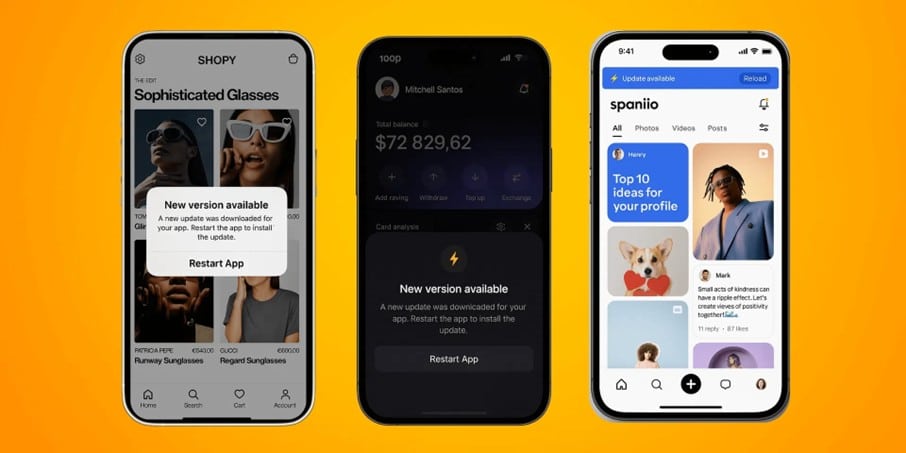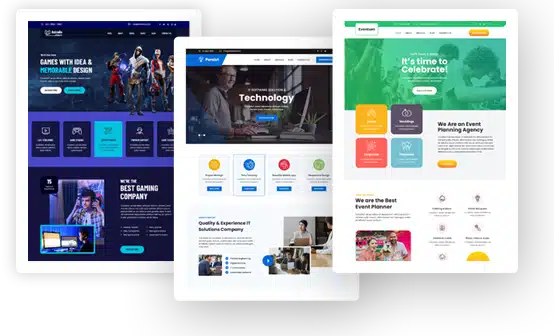App Introduction Video: Key Elements and Purpose

Let’s be honest: when was the last time you actually read through a full application description before downloading it? If you are anything like most people, then you scan a few bullet points, look at some screenshots, and make your decision in just a matter of seconds.
Exactly because of that, app introduction videos have become a must in this marketplace where everybody screams to be heard.
After having worked with numerous SaaS companies on their video marketing strategy, we saw in full force how a well-conceived app introduction video can be a game-changer for conversion. These short but engaging videos are now developers’ secret weapon to stand out amongst the competition of millions of apps.
The Power of First Impressions
Think of the introduction video to your app as a sturdy virtual handshake: it is the very first meaningful interaction a potential user has with the product, and we all know how first impressions matter.
From our experience working with SaaS companies in several fields, users usually are either interested in downloading an app or dismiss it within 7 to 10 seconds while viewing its store page. An introduction video can, however, keep them watching for over 60 to 90 seconds, giving you an enormously longer time to convey your app’s value proposition.
Another client saw conversion rates leap by 64% once a professional introduction video was put into use. The explanation is simple: in 60 seconds, that video said everything in which it would have taken users several minutes to decode using mere texts and screenshots.
Key Elements of an Effective App Introduction Video
After analyzing hundreds of successful app videos, Zelios.agency team identified several elements that consistently drive results.
-
Clear Problem Identification
The most effective app intro videos start out by highlighting the actual issue that the audience is up against. This strikes an immediate chord and establishes weight.
We recently worked with a productivity app that, in its video, showed a stressed-out professional juggling multiple to-do lists and missing deadlines. Viewers identified soon with such plight, generating an immediate emotional hold even before the app was mentioned.
-
Concise Value Proposition
Once you’ve established the problem, you have to say what the app does about it clearly. This is not a time to give technical or feature specifications but rather to tell what benefit alone makes the app worth downloading.
One of the financial management apps we worked with condensed its value proposition into one powerful message: “Take control of your finances in less than 5 minutes a day.” This was much clearer than their previous false starts, in which they tried to name every single feature they had.
-
Intuitive UI Demonstration
Users want reassurance: That the app is easy to use. If the interface itself is on display, then seeing actual interactions would reduce perceived friction and learning curves to a great extent, as against merely having them look at static screenshots.
Our experience has been such that rapid and easy-going navigation through the main functions of the app helps potential users imagine themselves using the app. This visualization is quite powerful-when users mentally imagine themselves using your product, they become far more inclined to install it.
-
Authentic Social Proof
Testimonials can create huge credibility if used appropriately. Usage statistics can do the same, but they should be used with sincerity, authenticity, and not presented as scripted statements. Brief, to-the-point comments from users or simple metrics are more powerful than long-winded testimonials.
One of the gaming apps with whom we worked successfully just popped-up a small counter in the corner of their video saying “2M+ active players”, which worked much better than lengthy power-user testimonials.
The AI Question in App Videos
Before we delve further into 2024 video strategies, let’s address the elephant in the room: AI. Many clients had been drawn to AI tools as a way of cutting costs, and they do have their place.
Voiceovers with AI have gotten quite good, and there are even motion graphics tools where animation is AI-assisted. Good for startups with the budget limitations.
On the other hand, in our experience, creating a fully AI-generated video rarely comes close to conversion-wise to content with human creativity running through it. The most successful combinations have been those that use AI to leverage efficiency with the human force that creates a real connection.
Optimal Length and Pacing
The most frequently asked question is, “How long should our app video be?” There is no single answer to this, but some patterns emerge clearly when the data are observed.
When placing in store or website, 30 to 60 seconds clearly yields the best engagement. For complex applications or one that needs to sell more education, 90 seconds work fine. Two plus minutes, however, can bring huge drops in the retention of viewers.
Far more important than absolute length is the pacing of a piece. Changing visual elements every two to three seconds will keep a viewer engaged even if the pacing of the story seems quite measured. This frequent refreshment of the visual stimuli will keep the eye from getting bored, even while the brain is processing more complex information.
Platform-Specific Considerations
The video should be designed with where it is going to be displayed taken into account. Video advertising spaces are very different from ad interfaces on social media and websites.
The primary goal should be to communicate value immediately, for the app store; since users are in browsing mode and intermittently appraising options. For social media, it is however very important that the very first 3 seconds stop the scroll so that the message can be delivered.
An app photo editor we worked with recently created three variations of the intro video: one for their app store listing (45 seconds, feature-focused), one for Instagram (15 seconds, results-focused), and one for their website (90 seconds, somewhat contextual). This platform-based strategy produced far better results than using one video all over.
Sound Design Matters More Than You Think
Most of the audience watches videos in silence, as they do on social media: therefore, it is crucial for the video to have captions. That said, performers and sound designers always think through their work for whoever listens.
Music sets the emotional tone, while sound effects emphasize the most critical points and transitions. We’ve discovered that custom sound design can increase engagement by as much as 23% over the use of stock music.
One of our clients, a meditation app, went a step further in their introduction video-they used actual in-app sounds to create an audio experience that indoctrinated potential users into becoming acquainted with their product, even prior to downloading.
Looking Ahead
Some new trends currently appearing around app intro videos for 2025 are interactive elements, personalized video paths, and deeper integration with other app store assets.
The most forward-thinking developers are creating introduction videos that don’t just explain their apps but actually demonstrate the emotional benefit of using them – focusing less on what the app does and more on how it makes users feel.
This shift toward emotional storytelling, even for utility apps, represents perhaps the most significant evolution in how successful apps are marketing themselves today.
After years of helping SaaS companies craft their visual narratives, one thing remains clear: while technologies and platforms continue to evolve, the fundamental human desire to quickly understand “what’s in it for me” remains unchanged. The apps that communicate this most effectively – through clear, engaging, and authentic videos – will continue to rise above the noise.

